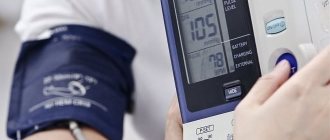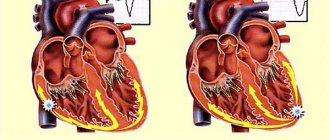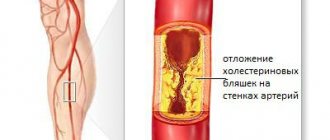Can scratching your fingers lead to heart defects? What are the causes of heart defects and how to prevent this pathology? How do acute respiratory viral infections and acute respiratory infections affect the heart? Can a nasopharyngeal infection lead to a stroke? Elena Nikolaeva, a doctor at the Medservice clinic, answers current questions related to the detection and treatment of heart defects.
There are two types of heart defects - congenital and acquired. The first are anomalies of the cardiac structures and circulatory system that arose during the formation of cardiac structures in utero. They are usually detected at the perinatal stage. This is the topic of a separate article, but here we note that according to statistics, for every hundred newborns there is one baby with a congenital heart defect.
Acquired heart defects are most often the result of complications caused by viral (bacterial) infections, heart injuries, and atherosclerotic damage to the valve apparatus. That is, those banal ARVIs that we are used to treating ourselves, based on the Internet, family recipes and “one grandmother told us,” end in complications in 15% of cases. Namely, inflammatory damage to the walls of the heart and its valve apparatus. In some cases (in the absence or improper treatment of a viral infection), this may lead to the need to replace the affected valve with an artificial prosthesis or even a heart transplant.
No magical and miraculous folk remedies, not a single pill, not to mention dietary supplements, could “darn” the damaged muscle or restore the valve destroyed by the virus.
How does heart disease develop?
As a rule, acquired heart defects are associated with infectious diseases. In childhood it is rheumatism. This is what people call back pain, which is completely wrong. It is actually a viral disease caused by group A β-hemolytic streptococcus. It is common in our environment but causes heart and joint damage in those who are genetically predisposed to it. It is important to identify this in childhood and adolescence. To do this, a genetic analysis is carried out and, if detected, a prophylactic dose of bicillin is prescribed for life. Identifying a person’s rheumatic predisposition is a priority for pediatricians and pediatric cardiologists. If they missed something, then in adulthood we are dealing with a ready-made heart defect.
It is important!
Any nasopharyngeal infections, sore throat, ARVI, acute respiratory infections, influenza can affect the heart. Especially if a person violates the regime, that is, suffers from a “sickness on his legs”, continues to go to work and is treated incorrectly. Then the virus spreads throughout the body, affecting various organs, including the heart.
The next group of causes of acquired heart defects are chest injuries received from a fall from a height or from blows to the chest (sports competitions, knife wounds, etc.). In this case, the subvalvular structures are more often damaged (torn off), namely the threads (chords) that hold the valves in a tense state. The result is valve failure. By the way, the separation of chords caused by the formation of atherosclerotic plaques on them can lead to the same consequences.
Prevention
A proven method of preventing secondary diseases of the cardiovascular system is vaccination. Vaccines against influenza viruses, meningococcal infections, hepatitis and other pathogens are available in medical institutions. Maintaining good hygiene, frequent hand washing and using disinfectants will help prevent infection in public places.
When the first signs of a cold appear, it is recommended to remain in bed.
If there is no improvement in the patient’s condition within a week, or if he is bothered by pain in the heart after the flu, immediately consult a doctor.
How to properly treat viral diseases of the nasopharyngeal system
To ensure that a viral disease does not affect vital organs, treatment must be prescribed and supervised by a doctor. In no case should this be self-medication or based on the advice of pharmacists, as is often the case. It's no secret that treatment is often prescribed directly in pharmacies.
However, there are general recommendations. The first is maintaining bed rest, which reduces the spread of the virus throughout the body. Secondly, it is in the first three days that a course of antiviral therapy must be carried out. If you didn't do this, then you are late. On the fourth or fifth day, the virus is no longer in the blood. With paracetamol, aspirin and other antipyretics, we remove the symptoms, but not the pathogen itself. And if the temperature remains high for more than four days, then most likely a bacterial infection has joined the virus. And then the question of prescribing an antibiotic may arise.
This is the most general scheme. Only a doctor can determine medications, the regimen for taking them, and the regimen.
The consequences of improper treatment or lack thereof can be very dire. For example, a pathological heart condition popularly known as “bull’s heart” is associated with beer abuse. But it can also be the result of neglected or undiagnosed myocarditis, that is, inflammation of the heart after a viral infection. The heart increases (“spreads”) in size, while losing its pumping function. And as a result, heart failure develops: shortness of breath, swelling of the legs, accumulation of fluid in the abdomen. And then only a heart transplant. There are no other radical methods of combating the “bull’s heart”.
Complications after viral infections in children
For modern parents, when a child is sick, the diagnosis of ARVI is almost like a pattern. Having looked through your medical record in the autumn-winter period, in any case, this unpleasant four-letter word will flash once or twice. And this is if children’s immunity is strong; for some children this is no longer a diagnosis, but a way of life during the cold season. In addition to the troubles of missing school, kindergarten and the problem of who to leave a sick child with, a more significant threat lurks in complications from the virus. The question arises: if the diagnosis is the same, why are the symptoms different for each case of the disease? And the whole point of the question is that one virus is different from another virus. There are several types that pediatricians write ominously, in a word, acute respiratory viral infection (ARVI). Depending on the type, the virus targets a specific group of organs, although this does not prevent it from negatively affecting other organs if the disease is severe. Main types: rhinovirus, parainfluenza virus, adenovirus, respiratory syncytial infection. The virus itself does not require treatment with antibacterial drugs, but often the course of the disease is complicated by general intoxication and the addition of a bacterial infection (for example, pneumococci or streptococci). It is important that only a doctor and a blood test can determine exactly what the nature of the disease is, so it is advisable to show the child to a specialist, especially if the age is less than three years. The temperature with ARVI lasts 3-5 days, from the third day it goes down, with the flu the fever lasts up to 39-40 degrees for 4-5 days. Due to their young age, pediatricians almost always hospitalize infants and children under three years of age if the disease has been confirmed. This is explained by the fact that they have a specific anatomical feature of the respiratory system and complications develop very quickly, for example, obstructive bronchitis or pneumonia. If a child is sick, but his temperature is within normal limits or up to 37.5, there is nasal congestion, clear mucus from the nose, sneezing and a sore throat, most likely he has caught a rhinovirus infection, popularly called a cold. Treatment is symptomatic, rinsing the nasal mucosa, using vasoconstrictor drops if necessary, using an antiseptic for the throat and drinking plenty of fluids. This is perhaps the most harmless viral infection in terms of complications. The main thing is not to miss the bacterial threat, but with proper treatment its likelihood is very low. Parainfluenza and syncytial infections can cause inflammation of the larynx (laryngitis) or attacks of suffocation, difficulty breathing, barking cough, and the temperature may remain within the acceptable range. Treatment of the child must be prescribed by a doctor; these infections are quite dangerous, and if medical attention is not provided in a timely manner, you can end up in intensive care or something worse. The most severe disease in the course of the disease and the “champion” in terms of complications is adenoviral infection. Fever is accompanied by a runny nose, cough, pain in the eyes, abdominal pain (inflammation of the lymph nodes), swelling of the cervical lymph nodes and tonsils. The child experiences lethargy, loss of appetite, and due to intoxication, vomiting or limb cramps may begin. This disease is treated with strict bed rest for at least the first 2-3 days, drinking plenty of fluids, compresses if necessary (cold or warm), taking vitamins, immunostimulants, antipyretics and pain relievers, it is possible to take antispasmodics and antihistamines. Most often, this virus is accompanied by a bacterial infection, since the immune system suffers greatly, it is treated with an antibiotic. As a result of this “cocktail,” not only the respiratory tract can be affected, but also the vascular-cardiac system (infectious myocarditis), liver and kidneys (they filter toxins), the musculoskeletal system (joints), and even the cerebral cortex. All these diagnoses, of course, are scary, but they can be successfully treated if you seek medical help in time. In children, fortunately, tissue regeneration is more active and the body, with proper rehabilitation, completely or almost completely resumes its functions. After recovery, the child lives a full life. We must remember that it is easier to prevent than to deal with the consequences of the disease. During the season of viral diseases, to strengthen the immune system, when visiting school or kindergarten, you can use Viferon ointment or oxolinic ointment, and if the virus has nevertheless entered the baby’s body, seek help from a specialist in time. Be healthy!
Under what “masks” can inflammatory damage to the heart be hidden? Cases from practice
The clinic for heart defects is very individual. The patient was hospitalized with a diagnosis of pneumonia. The high temperature lasts for three weeks, there are obvious signs of heart failure - shortness of breath, general weakness, swelling of the legs, tachycardia. The attending physician suspected endocarditis - inflammation of the inner lining of the heart. We carry out ultrasound diagnostics, or more precisely, echocardiography. We identify a tricuspid heart valve completely destroyed by the virus. Pneumonia in this case developed as a result of so-called “remnants” of the destroyed valve entering the lungs (through the bloodstream).
Ultrasound diagnostics showed that the aortic valve was destroyed. Its, so to speak, “remnants” traveled through the bloodstream to the brain, which led to impaired cerebral circulation.
In some cases, endocarditis may be disguised as a stroke. A young man with a high fever and signs of a stroke was admitted to the intensive care unit of an infectious diseases hospital. Ultrasound diagnostics showed that the aortic valve was destroyed. Its, so to speak, “remnants” traveled through the bloodstream to the brain, which led to impaired cerebral circulation. I'm starting to figure out the source of the infection. Then I pay attention to the small abrasions on my fingers. It turns out that the young man works as a car mechanic without using personal protective equipment. These skin lesions were most likely the entry point for infection.
A subsequent operation to replace the damaged valve with an artificial prosthesis allowed the patient to return to normal life.
Specialists
| 4.8 88 reviews | Lebed Dmitry Nikolaevich Therapist Experience 27 years Admission from 2500 rub. |
| 4.6 2 reviews | Tikhonova Irina Igorevna Therapist Experience 19 years Doctor of the highest category Admission from 5000 rub. |
| 4.4 4 reviews | Belyaeva Iraida Viktorovna Therapist 23 years of experience Doctor of the second category Admission from 7420 rub. |
Diagnosis of carditis
Diagnosis of carditis, especially mild forms, is a non-trivial task. Traditional ultrasound diagnostics, especially with mild myocarditis, may not show anything at all. In this case, another (more sensitive) ultrasound diagnostic method will come to the rescue - LVAF; automatic analysis of left ventricular function (AFFL), which will indicate problems in the heart earlier than traditional ECHO-CG.
In addition to heart inflammation, it can detect myocardial ischemia, which leads to heart attack, metabolic disorders, and intoxication. Currently, in Izhevsk it can only be performed at our Medservice clinic. Along with functional diagnostic methods (ECG, ECHO-CG, daily ECG monitoring), laboratory diagnostics are required, including a complete blood count, determination of the level of proteins of the acute phase of inflammation (C-reactive protein, fibrinogen, alpha and gamma globulins) of specific cardiac enzymes ( troponin. CPK-MB, LDH ALT, AST).
In my practice, there was a case when a patient came with only one complaint - rapid heartbeat during a short jog. During the collection of anamnesis, it turned out that her husband had suffered from a cold 10-15 days before, and she had minimal symptoms in the form of nasal congestion. Echocardiography and LVAF did not reveal any changes. But laboratory diagnostics revealed an increase in the cardiac-specific enzyme, CPK-MB. The patient was diagnosed with “myocarditis...” and appropriate therapy was prescribed.
Therefore, if you suspect an inflammatory lesion of the heart, you cannot limit yourself to just one type of diagnosis. It must be comprehensive. Carditis is treated with medication, and the resulting heart defect can lead to death. A timely operation can restore one hundred percent quality of life. But, firstly, it must really be done on time. And, secondly, not everyone is ready for this psychologically. Therefore, there is only one piece of advice: do not trigger viral diseases, but if the above signals occur, check your heart by conducting a comprehensive diagnosis together with a competent and experienced cardiologist.
Why does chest discomfort occur?
The severity and duration of symptoms when infected with a respiratory infection of the respiratory tract depends on the state of the immune system and the nature of the pathogen. Below are the main cause-and-effect relationships of the generalization of the infectious process and its impact on the cardiovascular group of organs:
- When infected, the infection enters the bloodstream through the respiratory tract and digestive tract.
- Manifestations of intoxication reflect the acute stage of viremia, the active reproduction of the infection.
- ARVI is characterized by an acute onset with an increase in temperature in the first days of illness to 39 degrees.
- Against the background of fever and dehydration, the heart rate increases to 80-100 beats per minute, and tachycardia appears.
- In addition to general catarrhal symptoms, pain and aches appear throughout the body.
- Periodic mild pain in the heart is sometimes associated with inflammation of the trachea or bronchi, irritation of the pleura of the lung during coughing.
- A complication of an infectious disease is myocarditis of rheumatic and non-rheumatic etiology.
- The leading symptom of viral myocarditis and rheumatic carditis is pain in the heart after ARVI one to two weeks later.
During the acute phase of the disease, viruses circulating in the bloodstream affect the blood coagulation system, causing inflammation and destruction of small capillaries. After this, they enter the extravascular bed and penetrate the myocardial muscle cells (cardiomyocytes). Under the toxic influence of infectious agents, foci of necrosis and inflammation appear in the heart. In response to this, the immune system produces anti-myocardial antibodies, and the disease becomes chronic with periods of exacerbation and remission. Without proper treatment, the pathology becomes severe.
For myocarditis and the cardiac form of rheumatic carditis, the symptom of pain in the heart after the flu is specific. The patient is also concerned about:
- rapid heartbeat and constant pressing, bursting pain in the heart;
- increasing shortness of breath during normal physical activity, housework, and walking up to 100-200 meters;
- night sweats, pale skin;
- low-grade fever for more than two weeks;
- decrease in blood pressure to 110/70 mm Hg. Art.;
- heart rhythm disturbance, tachyarrhythmia.
If such symptoms appear, consult a doctor immediately. Self-treatment only aggravates the condition and leads to undesirable consequences, the development of heart failure and decompensation.







